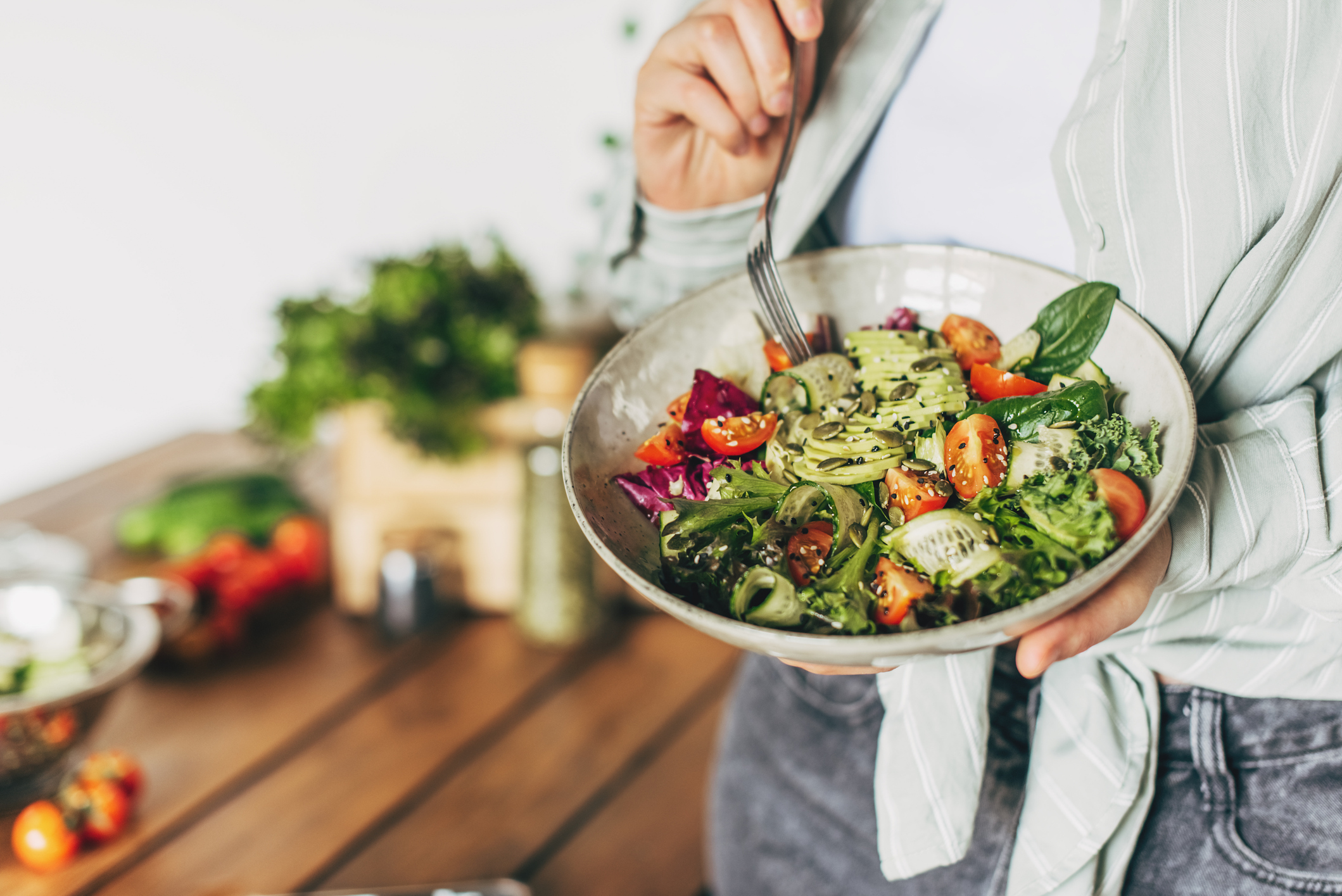The First Thing to Do to Get Back in Shape for Summer
No starvation diets here.

Photo: Kseniya Ovchinnikova/Getty Images
When you picture how you want to look and feel this summer, your first thought is, probably, that you need to get yourself to the gym like, yesterday. But there's a reason nutritionists and fitness experts often say that abs are made in the kitchen. And if you've ever heard that phrase and thought okay, but whose kitchen and how do I get there?, the answer is pretty simple. If you want to get in better shape for summer, start by increasing your intake of fruits and vegetables to seven to 10 servings per day.
(What qualifies as a serving varies a bit based on the specific fruit or vegetable, but generally speaking, one cup equals one serving.)
"It'll crowd out other high-calorie foods and help you feel full," says Jennifer McDaniel, RDN, nutritionist and owner of McDaniel Nutrition Therapy in St. Louis. Instead of making a laundry list of things you "shouldn't" eat, you'll focus on reaching your daily produce goal, and you'll likely find you don't have much room left for the ice cream and bagels. And because produce is high in filling fiber, you'll be less likely to give in and binge on less healthy foods because your stomach won't be growling at you.
Here's how to do it: At every meal, make sure half of your plate is made up of vegetables. The same applies for snacks—half of whatever you're eating should be produce. Think an apple with peanut butter, hummus with carrot sticks or berries and nuts. McDaniel's trick to making sure she packs in enough produce every day is a breakfast smoothie made with two cups of spinach, one banana, a half-cup of blueberries, flaxseed, peanut butter, unsweetened cocoa powder and soymilk. She freezes all of the produce ahead of time to create a thick, satisfying texture. It's her go-to way to make sure she gets "at least three to four cups of produce and a lot of nutrition into one item," she says. Remember that not all of your produce has to be fresh. "The frozen food aisle is amazing these days," says McDaniel. "Riced cauliflower and sweet potatoes—really simple ways to encourage getting more produce."
Jessica Crandall, RDN and spokesperson for the Academy of Nutrition and Dietetics, has another rule of thumb to help you prioritize your produce. When you're eating a meal or snack, it's "fluid first, then fiber," she says. That means you frontload your meal or snack with water, then eat whatever's highest in fiber, aka your fruits and vegetables. Then you move onto your protein and/or carbs. "By the time you're done with your fiber, you'll already start to feel full," she says.
Placing your focus on how much produce you eat also means you can worry less about counting calories. A recent study in JAMA found that participants who emphasized eating vegetables and non-processed foods while cutting back on added sugar and highly processed eats lost 12 to 13 pounds over the course of a year—without thinking about calories or portion sizes. Eating plenty of produce is also a good way to maintain a healthy weight (so shaping up for summer doesn't become an annual event). A large study in PLOS Medicine found that people who ate the most fruits and non-starchy vegetables were less likely to see their weight creep up over time and more likely to lose weight over the long term.
Of course, exercise can help you slim down (and there are the cardiovascular and muscular health benefits, and feel-good endorphins too), but there are good reasons why it shouldn't be your first step to your summer shape. If you're not a consistent exerciser already and you jump into an intense routine, you may end up eating back all the calories you burn and then some. "You might find you're overeating because all that exercise has made you hungrier," says McDaniel. Plus, we tend to overestimate how many calories we burn when we exercise. You might burn 300 calories during an intense 30-minute workout, "But you can eat that in five minutes," says Crandall. "You can't really outrun your fork."
Want more stories like this delivered straight to your inbox? Sign up for one or more of OWN's free newsletters!



